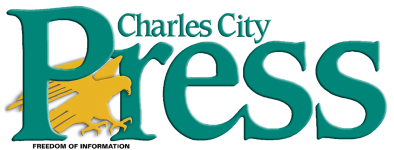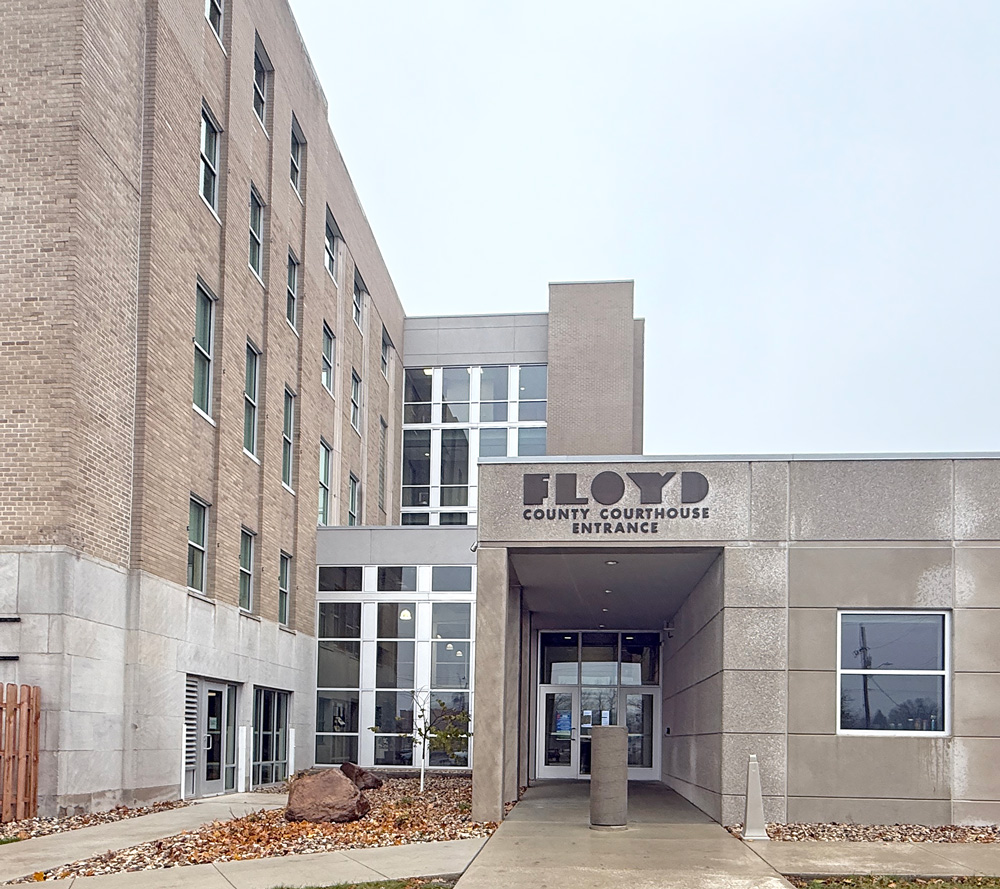Charles City Council reviews Main Street renovation plans

By Travis Fischer, tkfischer@charlescitypress.com
The Charles City Council discussed Main Street plans, garbage rates and tax abatement policy during its workshop meeting on Wednesday, Oct. 11.
At the meeting, the council met with engineer Jason Petersburg of Veenstra & Kimm Inc. to review the latest revisions to the 2024 Main Street Rehabilitation Project.
After collecting feedback from the community during last week’s public information meeting, the plans for a major renovation of Main Street are settling into place.
Encompassing Main Street from Gilbert Street to Lane Street, the project will resurface the street, repair the curb, make sidewalks ADA compliant and completely realign the road leading to Grand Avenue.
One detail discussed involved the line of bricks that accents the sidewalks along Main Street. The bricks will have to be removed during the project, opening a question of whether or not to return them or leave them out.
Feedback from business owners leaned toward not putting the bricks back, as they limit the amount of usable space on the sidewalks.
Mayor Dean Andrews floated the idea of keeping the spirit of the bricks alive by replacing that portion of the sidewalk with colored pavement, but the added expense and the issue of upkeep left the council cool on the concept.
Another issue considered was a request from a property owner along south Gilbert Street, asking that the city use this opportunity to remove a small retaining wall that sits along the city right of way. Only a couple of bricks high, the retaining wall separates the bushes along Gilbert Street from the grass along the sidewalk.
“This may not be a bad time to consider that,” said Andrews.
On the north end of the street, the realignment will curve Main Street across the corner of the city-owned property at 808 N. Main toward North Grand Avenue, along with creating a paved island at the intersection, two parking spaces, and new grassy areas along the sidewalks. The council discussed what markings and signage would be appropriate for the redesigned intersection.
Slated to be worked on in five phases, the council discussed ways to keep the community, particularly business owners, up to date on when construction will happen on any particular block so that parking and access accommodations can be made. Along with face-to-face meetings with business owners, the council also suggested a system to send out text messages, physical handouts or public announcements on the radio to let people know what is being worked on.
Regarding more immediate projects, the council is being asked to consider a change order for the Mill Race Parking Lot Project. Lodge Construction is asking for nine additional working days to finish the parking lot due to delays caused by utility relocation from Mediacom and MidAmerican Energy. The parking lot project was originally estimated to be complete in mid-October, but delay in moving utilities along with anticipated rain will likely move the completion date closer to the end of the month.
In other business, the council met with Community Development Director Mark Wicks and Events Coordinator Eve Welton to review the chamber’s request for a street closure for the upcoming SpookWalk.
Scheduled for Monday, Oct. 23, with a rain date of Oct. 30, the chamber is asking to close both St. Mary’s Street and Leland Avenue from Clark Street to Riverside Drive for the afternoon of the event to keep cars away from the walking kids.
Council member Keith Starr said he appreciated the SpookWalk and efforts to keep participants safe, but did ask that the chamber make its future street closure requests earlier so the Police Department can make plans to schedule officers for that day.
Wicks also discussed the continuation of Charles City’s participation in the Main Street Iowa Program. The joint agreement between the city and the Iowa Economic Development Authority has promoted downtown Charles City in the Main Street Iowa Program since 1996 and is coming up for renewal.
“The big change here is that it used to be a two-year agreement and it’s moving to a four-year agreement,” said Wicks.
Looking over another agreement, the council heard from Parks and Recreation Director Tyler Mitchell, who presented a new agreement between the city and the City Improvement Association (CIA).
The CIA owns several parks across Charles City and pays Charles City $5,000 a year for mowing services. In the past, the CIA has also allotted money to be available on request when the city needs new mowing equipment. For the new agreement, the CIA wants to give the city $25,000 over three years, which the Parks and Recreation department can collect to use when needed.
“With us coming ahead on that, it’s a pretty good deal,” said Mitchell.
Another contract renewal discussed involved LJP Waste Solutions, which is requesting an 8.4% garbage collection rate adjustment. The city’s agreement with LJP allows for an annual rate increase to match the Consumer Price Index, which amounts to 5.9% between August 2022 and July 2023. The additional 2.5% adjustment LJP is asking for is the result of a price increase from the Floyd-Mitchell-Chickasaw County Landfill, which increased its charges from $41 per ton to $43 per ton.
Council members asked for more information about how LJP arrived at the 2.5% number, with Starr wanting a representative from LJP to come to a meeting to walk them through a breakdown, and council member Phillip Knighten wanting to know what the rate adjustments means for LJP in dollars and cents.
“I want to know what the actual number is, to be honest,” said Knighten.
Finally, City Administrator Steve Diers presented information about a proposed Urban Revitalization Tax Abatement Program.
Utilized by communities across the state to encourage development and renovation on homes and commercial properties, the tax program allows property owners the ability to apply for abatements on the added value of major developments.
“The general idea is that if you build a new building, whatever the assessed value would be, you get a tax break for the additional value of that building,” said Diers.
Under the proposed plan, any developments, whether new construction or additions, that increase the assessed value of the property by more than 10% would qualify for abatement, abating the taxes on the additional value for 10 years.
For example, a developer building a $100,000 building on a $5,000 lot would continue to pay taxes as though the lot was still assessed at $5,000 for a full decade.
Likewise, a homeowner with a $100,000 house adding an addition that increases its assessed value to $120,000 would continue to pay taxes as though the addition was never added for 10 years.
Property tax abatement does mean the city loses out on the increased tax revenue from new buildings and additions, but is a short term loss to encourage development that otherwise may not happen.
“An empty lot doesn’t pay a lot of tax,” said Starr.
The council discussed finer details of the plan, such as how properties and additions would be assessed and how abatements would be calculated over 10 years as property values naturally increase.
Also discussed was the idea of implementing a gradual step in the abatement, slowly decreasing the abated percentage over 10 years rather than all-at-once. This would result in less revenue given up by the city over time and less of an impact on the property owner’s taxes after the abatement finishes.
However, while Diers also initially was in favor of that approach, he reported that many other cities are offering a full 10 years at 100% and he believed that is what Charles City would need to offer in order to stay competitive for projects.
The council will be scheduling a public hearing at a November meeting to start the process of establishing a tax abatement program.










Social Share